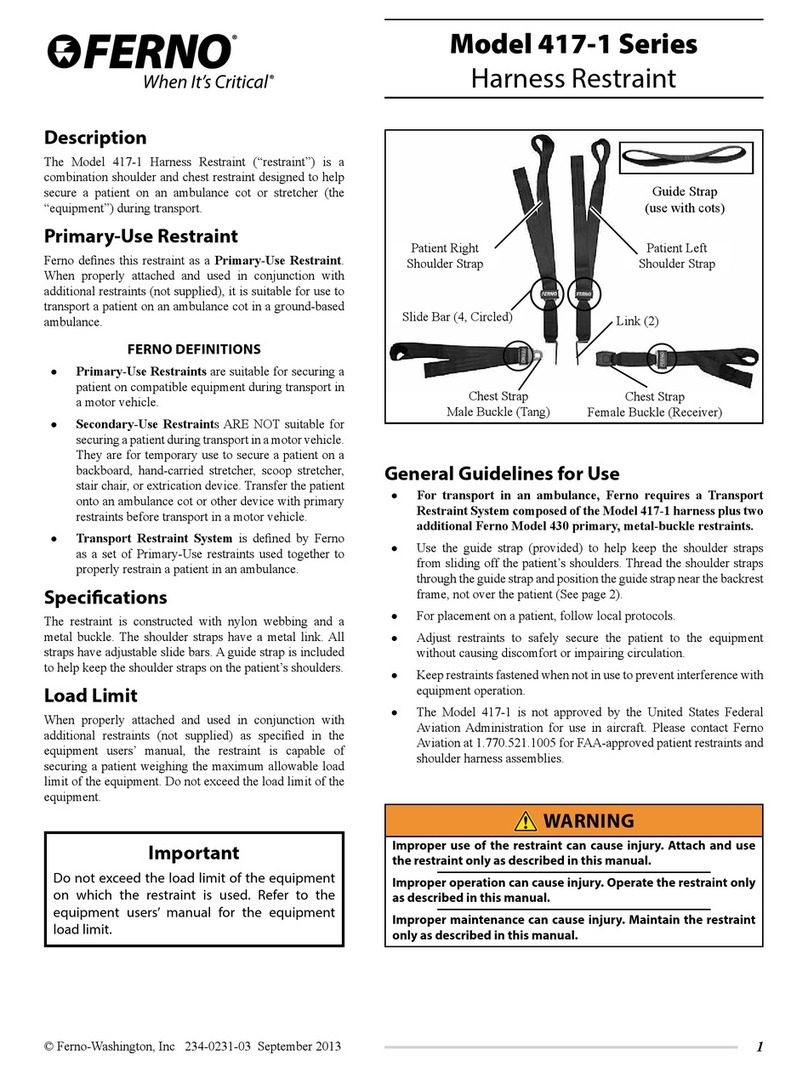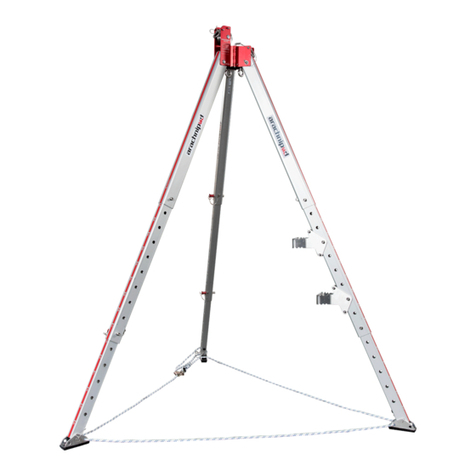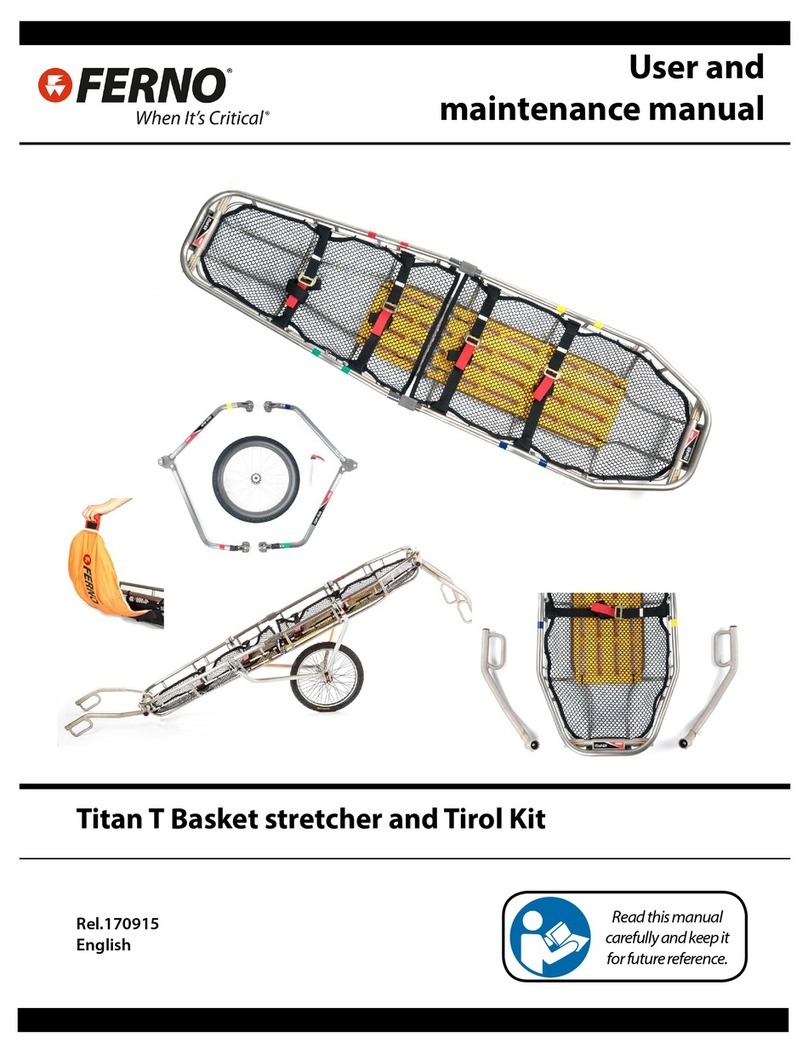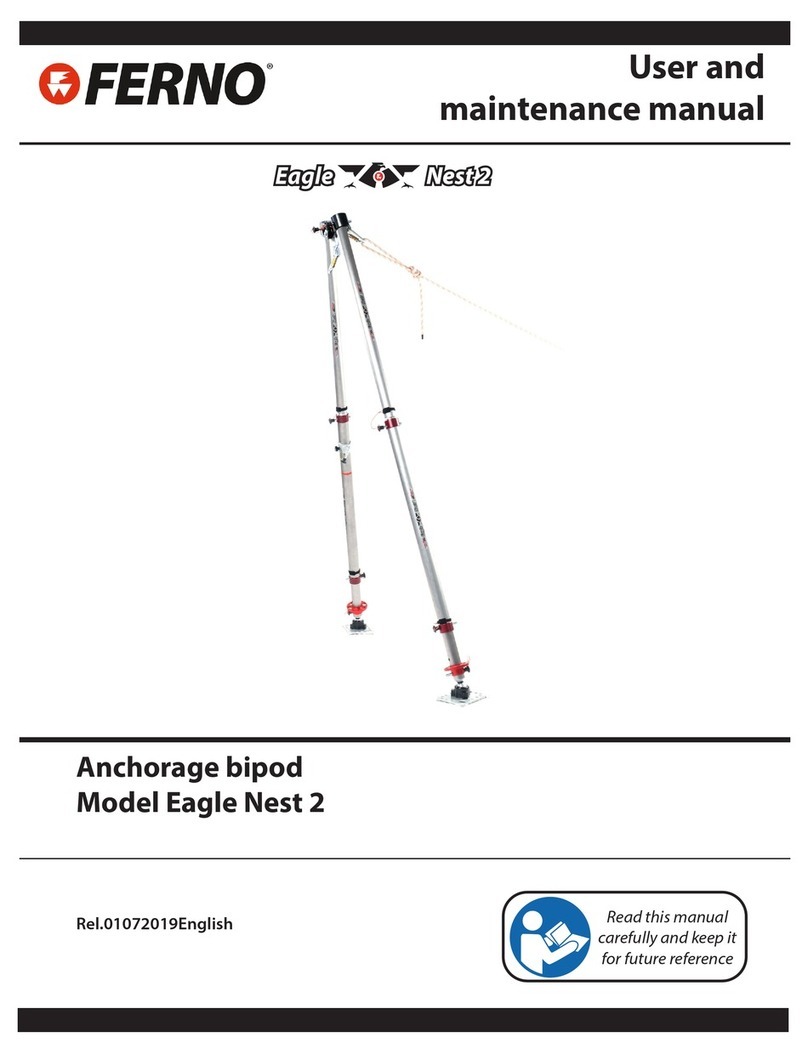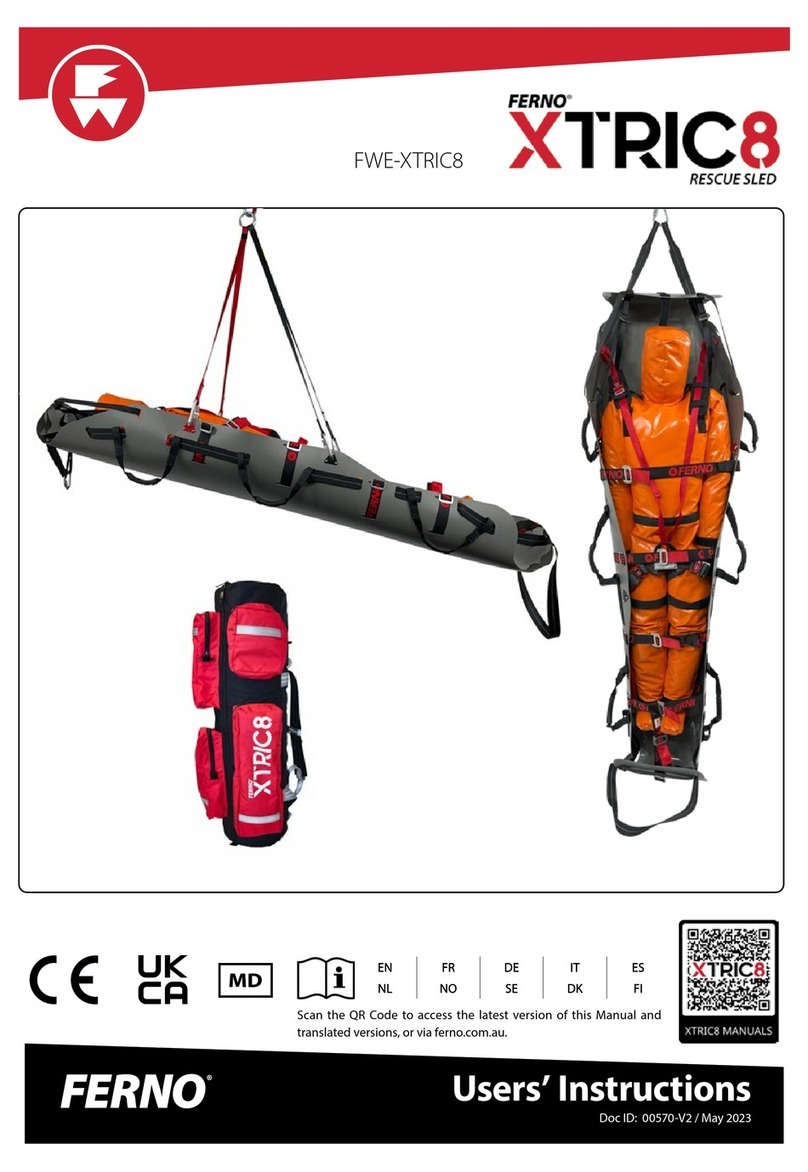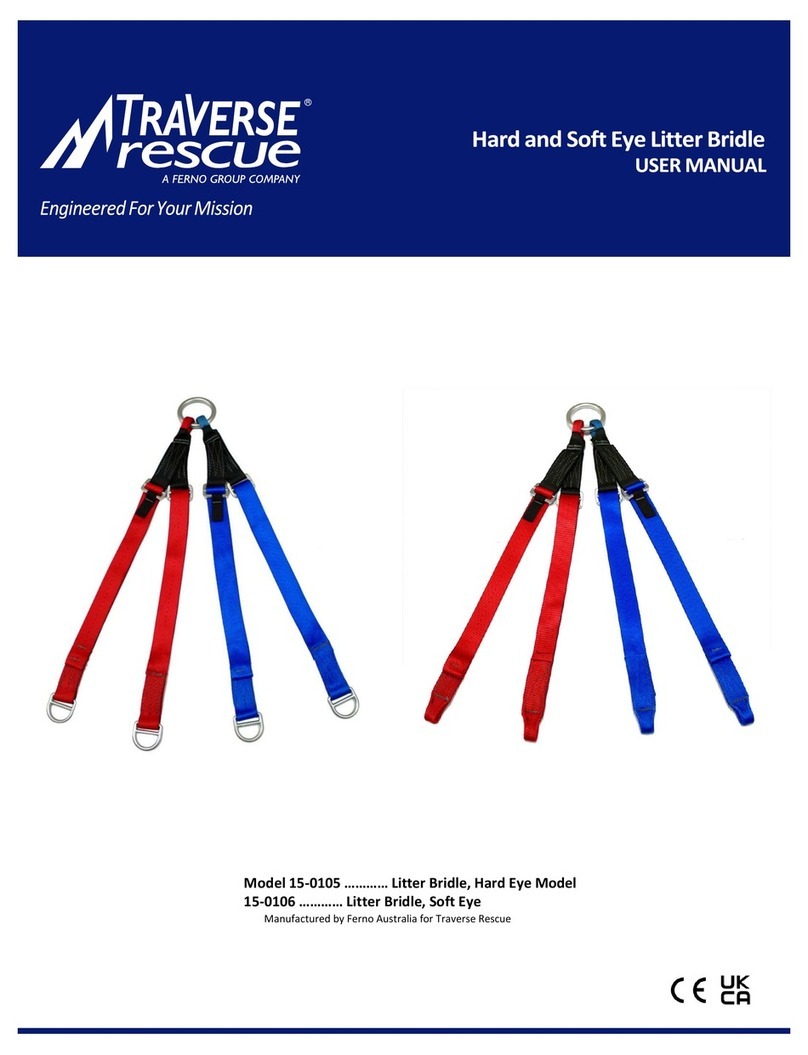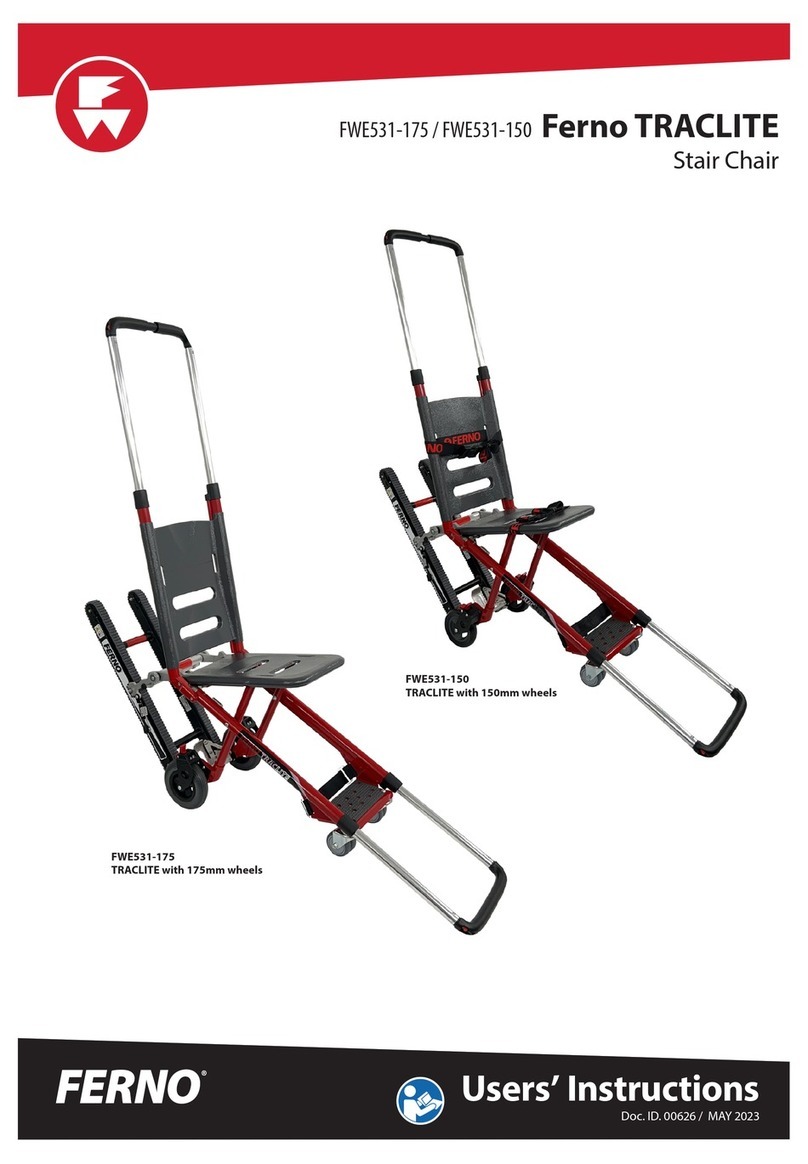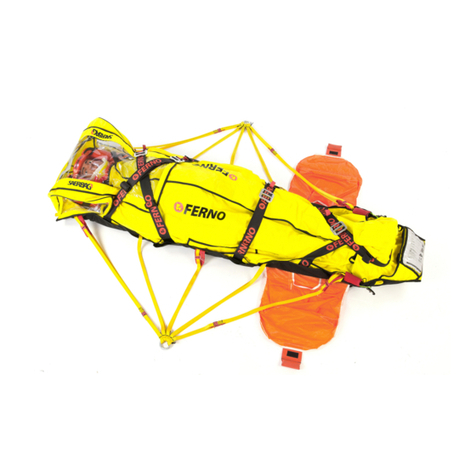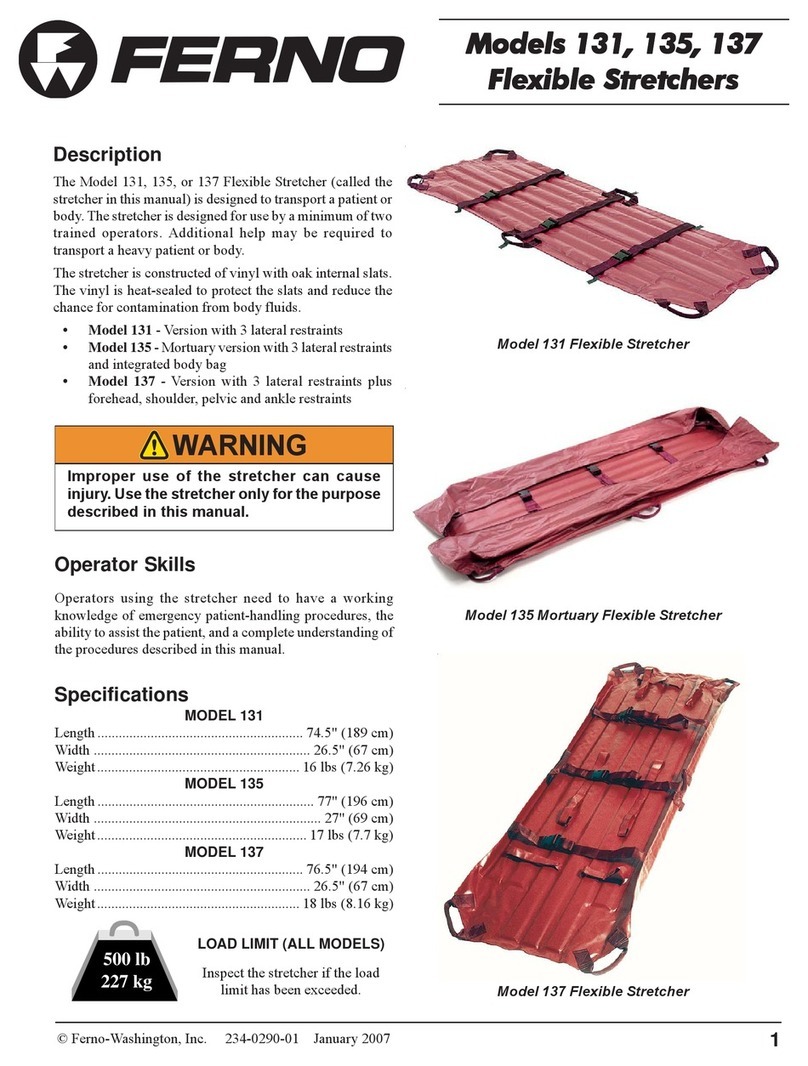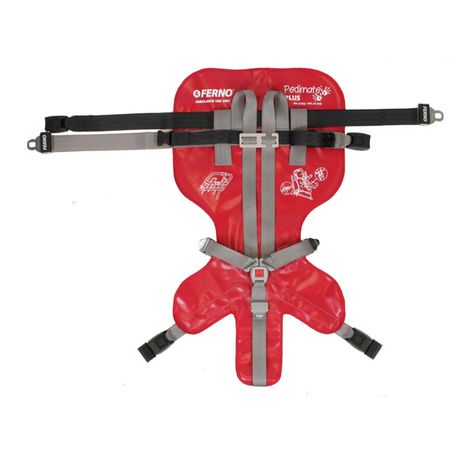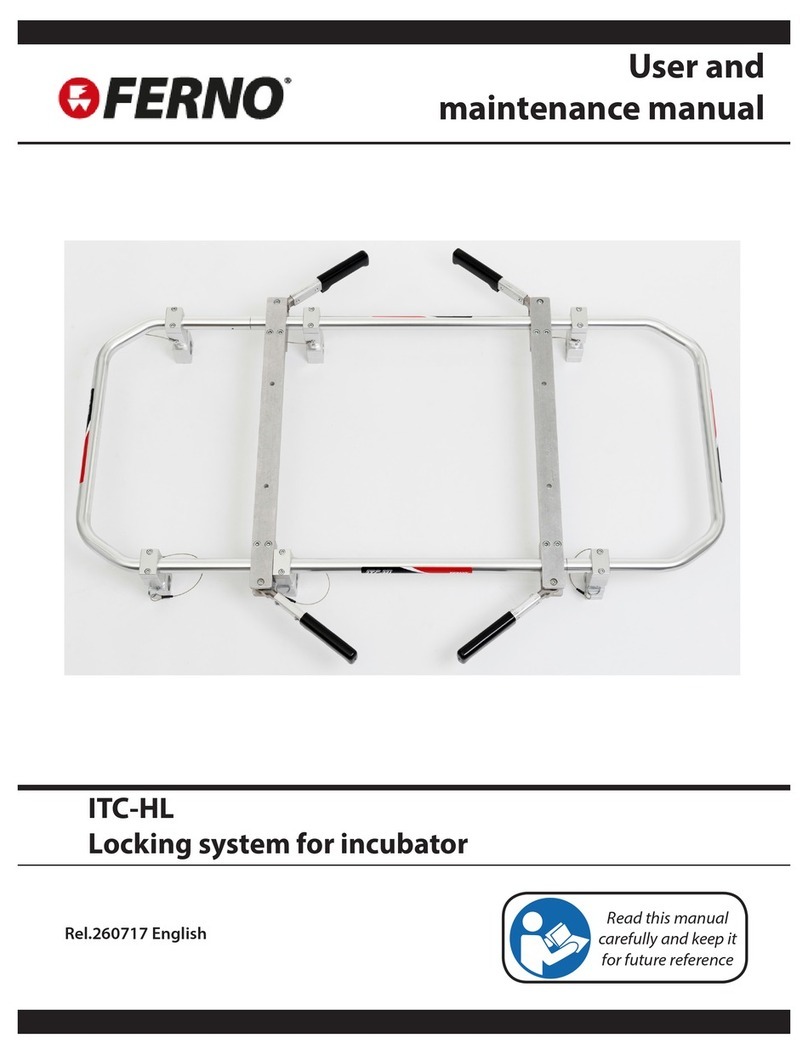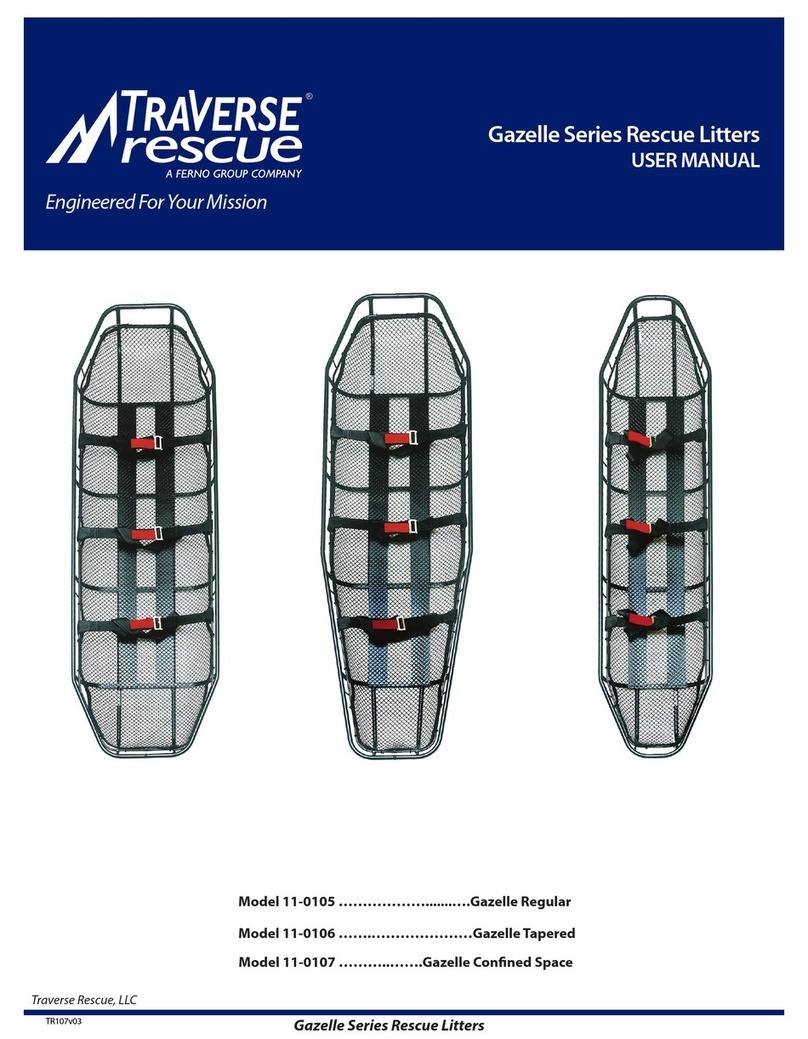
Ferno Australia | 11 Johnstone Road, Brendale QLD 4500 | +61 7 3881 4999 | INFO@FERNO.COM.AU | FERNO.COM.AU ©FERNO AUSTRALIA / 00583 JUNE 2022 | Page 3 of 4
NOTICE
• EMPLOYERS: It is your responsibility to ensure all users are instructed and trained in the correct use and maintenance of the equip-
ment. Once equipment is issued, it is assumed appropriate training has been completed.
• USERS: You must consult AS/NZS 1891.4 for selection, use, maintenance and training requirements and be competent in the use
of equipment before beginning any tasks requiring its use. It is your responsibility to read and understand these instructions.
Always use equipment safely and properly. Check equipment before and after use.
• GENERAL: This document contains general tting instructions. Instructions are not all inclusive. Modifying the equipment can cause
injury and damage and will nullify any warranty and place full responsibility for any accident or injury on the equipment owner.
Fitting the Harness
1. Read the instructions carefully and check the harness labelling
to ascertain that you have the correct harness for the task.
2. Inspect the harness webbing and hardware for signs of wear
or damage.
3. Hold up the harness by the rear dorsal D-ring/loop and
untangle any straps that may have twisted during storage.
4. Separate the shoulder straps and familiarise yourself with
the layout of the harness. Release the sternum strap and leg
buckles from their respective links.
5. Put on the harness by passing your arms through the shoulder
straps as if putting on a jacket. Adjust the shoulder buckles to
the appropriate length/height.
6. Fasten chest strap with buckle, ensuring each buckle plate lays
at against its mate. Adjust for a comfortable t. Check that
the rear fall arrest D-ring is positioned centrally on your back
between your shoulder blades.
7. Pass both leg straps between your legs making sure there
are no twists in the straps. Using the same method as before,
connect the left leg strap’s buckle to the left leg link, and the
right leg strap buckle to the right leg link. Adjust both for a
comfortable t.
8. Tighten and adjust the shoulder straps. Re-adjust the front
sternum strap and leg buckles. The Rear Dorsal Attachment
Point should be positioned midway between your shoulder
blades. The nished tting should feel snug but not restrict
movement in any way.
9. Secure loose ends with keepers and check for twists, misaligned
webbing and disconnected buckles.
Inspecting the Harness
To maintain the safety and serviceability of this product the
following inspections must be performed.
1. OPERATOR INSPECTION
The operator/wearer shall inspect the product before and after
each use. Check all webbing, thread and metal components for
excessive wear or damage. Refer any signs of deterioration to a
competent person for a decision on the safety and serviceability
of the product.
Harnesses and lanyard assemblies should be destroyed
or returned to the manufacturer for inspection if a fall has
been sustained.
2. PERIODIC INSPECTION
A full periodic inspection shall be conducted every six months
by a competent person. Use the provided checklist as a guide
for determining the condition of the product. Check for signs of
contaminants such as oil, grease, paint etc.
Periodic inspections shall be recorded in the product’s
Inspection and Maintenance Log. A sample log is provided in
these Instructions.
NOTICE
Exposure to chemicals and hazardous atmospheres can cause
damage to bres and components that are not immediately
visible.
If any part of an assembly is to be exposed to chemicals such
as cleaning materials or hazardous atmospheres, the user
should consult the manufacturer to determine whether the
part is suitable for continued use.
Maintenance
This product should be cleaned regularly to maintain its condition
and serviceability. Clean as indicated below.
1. AFTER EACH USE
After each use, wipe down the product to remove any dust
or dirt. If there is any sign of contaminants such as oil, grease,
paint, etc tag the product as unt for use and refer it to a
competent person for inspection.
2. DURING PERIODIC INSPECTION
Hand wash the product with Ferno Rope and Harness Wash
every alternate periodic inspection (ie. every twelve months).
The harness may require more frequent washing depending
on the conditions it is exposed to.
Hang the product in a sheltered, shaded area away from direct
heat to dry completely.
• Do not machine wash
• Do not tumble dry
Refer to the manufacturer for advice on removing dicult
stains.
Storage
Store the product away from direct sunlight and protected from
dust, moisture and corrosive atmospheres.
